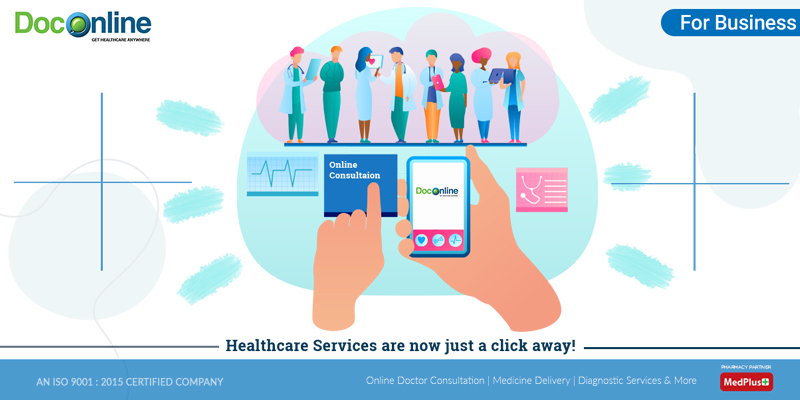Just How Subscription-Based Health Care Is Transforming the Clinical Industry

The Increase of Membership Health Care
Recently, the health care market has experienced a considerable shift in the direction of subscription-based versions, mirroring more comprehensive customer trends favoring comfort and predictability. This improvement is driven by the boosting demand for even more available and tailored care solutions. Subscription healthcare, in some cases described as concierge medicine or straight health care, supplies clients a set regular monthly fee for a variety of medical services, considerably changing typical fee-for-service designs.
The increase of subscription healthcare is facilitated by advancements in modern technology, which enable structured communication between companies and individuals - subscription based healthcare. Digital platforms and telehealth services have become important, offering people the capacity to schedule appointments, gain access to medical records, and receive assessments online. This technical combination not just improves individual engagement however likewise allows suppliers to provide a lot more efficient care
Additionally, the membership version straightens with the evolving assumptions of clients who look for even more control over their health care expenditures and experiences. By removing the changability of co-pays and insurance policy claims, subscription-based medical care provides a transparent and uncomplicated approach. While this design is acquiring traction, its proliferation faces obstacles such as governing obstacles and the need for more comprehensive acceptance within the traditional healthcare ecosystem. Its growing existence marks a pivotal minute in the advancement of healthcare distribution.
Advantages for Individuals and Companies
Subscription-based health care uses a wide range of benefits for both carriers and people, reshaping the characteristics of clinical treatment. For clients, this version provides boosted accessibility to healthcare services.
For medical care companies, subscription-based designs promote a more rewarding and lasting technique. By safeguarding a steady earnings stream, service providers can concentrate on supplying high-grade care without the pressure of volume-based solution. This model urges longer individual examinations, fostering stronger patient-provider relationships and improving wellness outcomes. Additionally, it offers suppliers the adaptability to introduce and incorporate preventive and all natural treatment practices. Administrative jobs are typically structured, decreasing overhead costs and allowing companies to dedicate more time to individual communication. Generally, subscription-based medical care aligns the rewards of people and service providers, promoting a more efficient and patient-centered healthcare delivery system.
Trick Features of the Model
Regularly, the crucial attributes of the subscription-based health care design emphasize its unique approach to providing clinical solutions. Central to this version is the principle of predictable, regular monthly repayments, offering patients a detailed variety of services without the changability of typical fee-for-service structures. This version usually includes endless accessibility to health care services, preventive treatment, and regular exams, ensuring that individuals can engage with their healthcare service providers proactively instead of reactively.
In addition, direct interaction channels, such as telemedicine and messaging platforms, are highlighted, allowing patients to obtain timely recommendations and assessments without requiring in-person consultations. This enhances ease of access and ease, particularly for individuals with movement Recommended Reading restrictions or those staying in remote locations. The version additionally promotes more powerful doctor-patient partnerships, as doctor are incentivized to concentrate on long-lasting wellness results instead of temporary visits.
Additionally, subscription-based health care usually integrates technological developments, such as digital wellness records and wellness tracking applications, to give reliable and tailored care. Clients take advantage of coordinated and continual care administration, which is tailored to their specific wellness requirements. Eventually, these features collectively produce a patient-centered healthcare experience, focusing on availability, price openness, and precautionary care.

Factors To Consider and obstacles
While the subscription-based healthcare model uses many benefits, it is not without its factors to consider click here for info and challenges. One significant challenge is guaranteeing equitable access. Membership models might accidentally favor those with greater socioeconomic condition, potentially expanding variations in healthcare access for lower-income individuals who may fight with regular monthly charges. This increases honest issues concerning inclusivity and equity in medical care shipment.
An additional difficulty exists in regulatory conformity. Subscription-based healthcare needs to navigate an intricate web of guidelines that vary by area, including problems around patient privacy, data protection, and state licensing needs. Guaranteeing conformity without impeding the version's adaptability and development can be intimidating for carriers.
Additionally, there is the threat of overutilization or underutilization of services. Clients paying a taken care of charge may overuse solutions, bring about raised functional costs, while others may underutilize because of fear of straining the system, potentially neglecting necessary treatment.
Future Prospects and Innovations
The landscape of subscription-based healthcare is poised for transformation via emerging technologies and developing potential customers. As modern technology remains to advance, the assimilation of synthetic knowledge and artificial intelligence offers considerable chances to boost analysis precision and simplify person administration. Predictive analytics can change preventative treatment by recognizing possible health dangers prior to they materialize, therefore lowering both prices and the problem on healthcare systems.
In addition, telemedicine is readied to expand within membership models, offering individuals boosted access to healthcare professionals no matter of geographical restraints. This not only assists in connection of care however also empowers patients to engage more actively in their health and wellness management. Additionally, blockchain technology supplies possible in securing client information and ensuring interoperability across platforms, promoting count on and openness.
The development of individualized medication is one more frontier, with registration versions giving an one-of-a-kind framework for providing customized health remedies. Hereditary testing and tailored therapy plans can be perfectly incorporated, straightening client needs with particular clinical interventions. Furthermore, partnerships between tech companies and health care providers are likely to produce cutting-edge options, improving patient experiences and results. As these prospects emerge, subscription-based medical care has the prospective to redefine how treatment is provided and accessed.
Conclusion
Subscription-based health care is transforming the clinical market by using a more easily accessible, foreseeable, and patient-centered technique to medical services. Despite challenges such as regulative obstacles and possible disparities in accessibility, the registration model holds pledge for an extra customized and effective healthcare experience.
Membership medical care, occasionally referred to as concierge medicine or direct main care, other uses people a fixed monthly cost for an array of clinical solutions, significantly altering conventional fee-for-service designs.
Additionally, the subscription model lines up with the progressing assumptions of patients that seek even more control over their medical care expenditures and experiences. For individuals, this design supplies boosted accessibility to health care services. On the whole, subscription-based health care straightens the motivations of suppliers and people, advertising an extra reliable and patient-centered medical care delivery system.
In addition, telemedicine is established to broaden within subscription versions, offering clients raised accessibility to medical care specialists regardless of geographical restraints. - subscription based healthcare